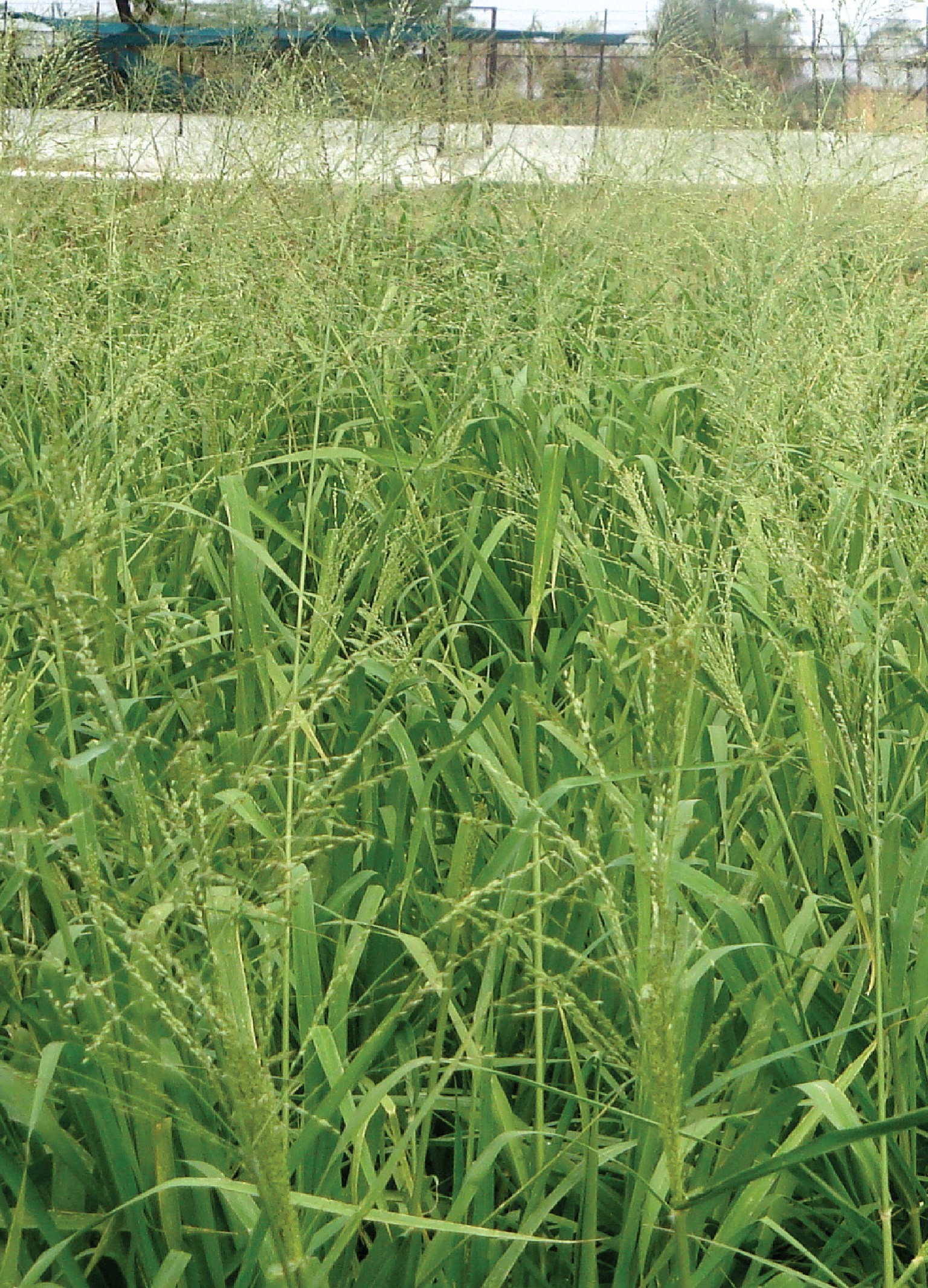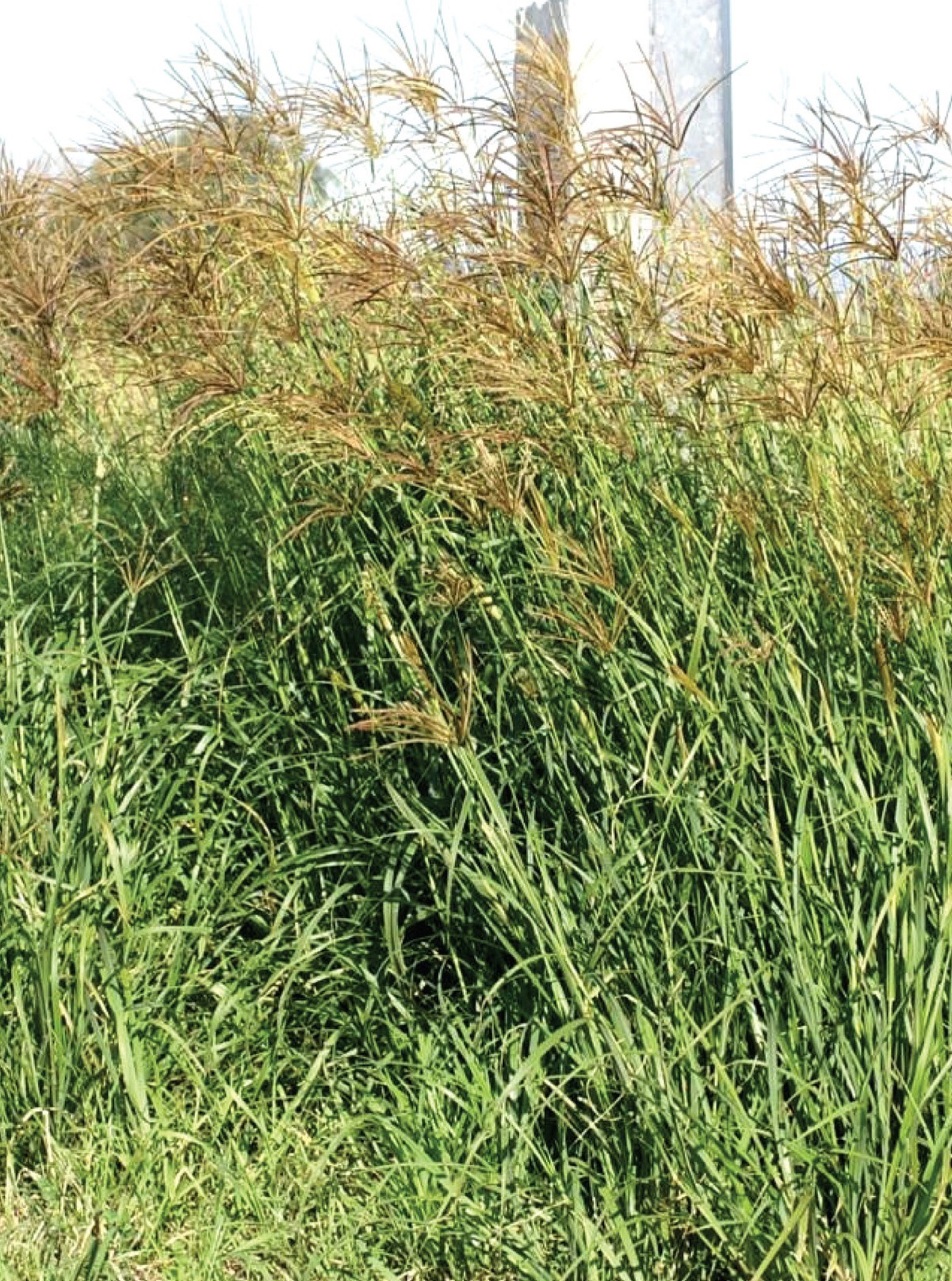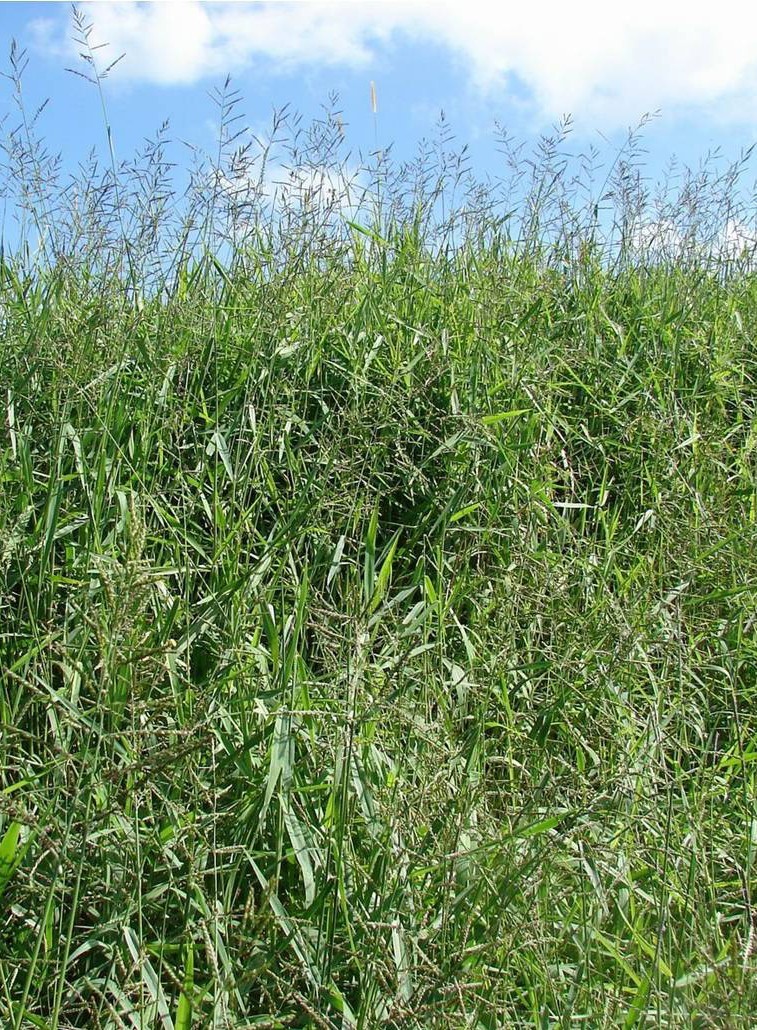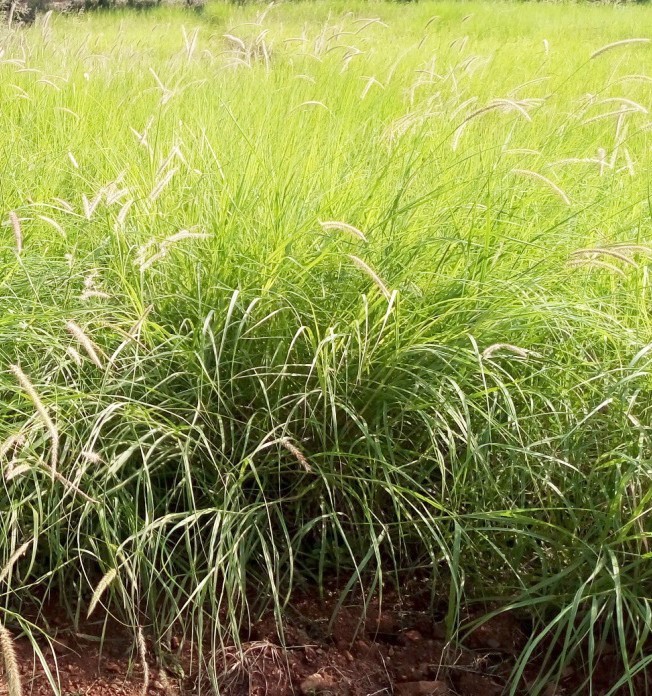| Scientific name |
Pennisetum purpureum x Pennisetum glaucum |
| Important features |
A cross between Napier grass and fodder pearl millet, multi-cut varieties can yield fodder for 3-4
years. Its deep root system enables survival under drought. It can be cultivated on bunds and along
water channels. Crude protein ranges from 8-11% and the immature crop contains Oxalates as toxin.
|
| Varieties |
DHN-6, Yashwant, NB 21, Co-4, IGFRI-7, BNH-10, APBN-1.
|
| When and how to plant |
Preferably planted during mid-February to July, 30,000 two-eye budded stem cuttings or root slips
are planted at 60 cm × 60 cm distance. Can be planted throughout the year under irrigated
conditions. |
| Chemical fertilizer (kg/ha) |
50 kg N:50 kg P:40 kg P during planting and 50 kg N after every cutting.
|
| Farm Yard Manure (tons/ha) |
25-30 t 20-25 days before planting. |
| Irrigation |
Every 15 days during the rainy season and every 7-10 days during the summer. |
| When to harvest |
First cutting after 60-75 days and subsequent cuttings after 45-60 days. |
| Green fodder yield (tons/ha) |
250-300 t annually from 6-8 cuttings. |






